Metro-Goldwyn-Mayer (1940-1948), Warner Home Video (October 25 2011), 2 discs, 284 mins plus supplements, 1080p high-definition 1.33:1 original full frame ratio, Dolby Digital Mono, Not Rated (“Tom & Jerry Golden Collection Volume 1 is intended for the adult collector and may not be suitable for children”), Retail: $34.99
Storyboard:
The world’s most famous cat and mouse team begin their decades-long feud all over again in this debut high-definition assembling of their classic earliest shorts!
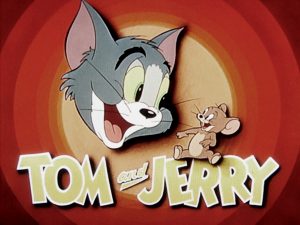
The Sweatbox Review:
For a studio that was once rivals with Tom & Jerry’s producing outfit MGM, Warner Bros. has over the years done the duo proud, with a string of releases that has kept them in the public eye. Of course, WB are more than happy to do this as long as the cat and mouse make ’em money, and thankfully Bill Hanna and Joe Barbera’s team are so timeless that they continue to do so. However, with great exposure comes great responsibility, and mindful of some of the stereotypes the original cartoons – made in the 1940s before the kind of social awareness we have today – contained, several cuts, re-dubs and other alterations have befallen these classic shorts. Long-time fans of optical home video disc-based formats will remember that it wasn’t always so: a terrific anthology collection put out by MGM themselves on LaserDisc in the early 1990s contained the chronological adventures of Tom & Jerry without cuts and with the original soundtracks intact.
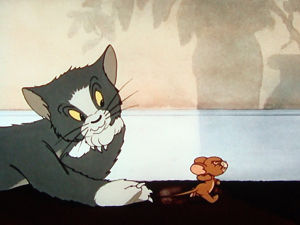
That was also the intention when Warners picked up the baton for the DVD Spotlight Collections, although the mixed-up assortment of cartoon offerings and the emergence that there were quality control issues with some discs meant more were put off than not. As such, the cartoons became vanilla disc fodder, feeding an unending line of single-disc releases aimed at kids and babysitting-needy families, also diluting the vintage material by mixing in newer television cartoons and direct-to-video outings. A token “Deluxe Anniversary Collection” came last year to DVD, but the choice of cartoons was again random and the lack of a true anniversary somewhat marred the no-doubt good intentions of the compilation. What collectors really wanted was a return to the chronological LaserDisc sets of old, but with newer restored prints.
Well, consider yourselves heard, for we get all this and more here, and in hi-def to boot!

Actually, a “boot” kicks us off, so to speak, with the cat and mouse’s debut cartoon, the 1940 Puss Gets The Boot, which came so early in Hanna-Barbera’s MGM careers that it is actually labelled as a Rudolf Ising production, and neither character is named as we know them. The cat is called “Jasper” and has a distinctly more tabby appearance, while the mouse already has the features that we recognise as Jerry, (in fact, he would be the character who, over the years, changed least). Coming from different studios (Bill from Rudy Ising and Hugh Harmon’s outfit, Joe from Paul Terry’s TerryToons), Hanna and Barbera had met and been encouraged to work together at MGM during the 1930s, producing a number of stand-alone shorts under the aegis of the Harmon-Ising unit before moving up the production line to become story artists, planning and directing a short they’d come up with, featuring a cat and mouse act.
Puss Gets The Boot was to be a one-off cartoon just like any other, although the immense success of the film and the pressure from distributors for more feline/rodent war meant the development of a series. Their debut starts off with a great gag: in close up we see the mouse running from his opponent. The camera cuts back and we see that the cat has already caught the mouse and he is running on the spot, his tail held by the cat’s claw! While the cat toys with his prey, the mouse gets away, leading to a number of gags (including a great one where the cat revives the mouse only so he can torment him some more!) which result in the breaking of a vase. Mama, the house maid, chastises the cat, stating that if anything gets broken, he’ll be sent out. Naturally, this is an opportunity that the mouse cannot pass up and a battle of wits that would last for decades begins for the first time!
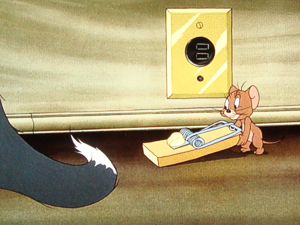
Nominated for an Academy Award, Puss Gets The Boot, really is a great cartoon, setting up the situation and playing it off to perfection, and it’s easy to see how the duo were awarded their own series, which began with the next title in this set, 1941’s The Midnight Snack, the first “true” Tom & Jerry cartoon, as announced by the title card and Hanna-Barbera’s directing credit. The long-standing preoccupation with food makes an appearance in this one, when Tom catches Jerry raiding the refrigerator, and the short has all the production values we expect from a cartoon of this period. Tom’s look is a little more rounded and it is clear that there is a lot of mileage to be had from these characters. A second Oscar nomination came their way with The Night Before Christmas, a classic that still gets a lot of airings today, from the December of 1941. The film begins with Tom’s usual pursuit of Jerry, this time under the Christmas tree, but ends happily when the grouchy cat is touched by the holiday spirit.
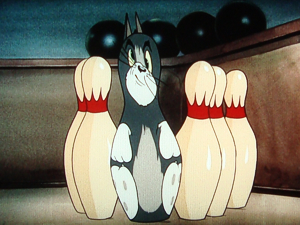
Given Hanna-Barbera’s later limited television animation, one can forget that their earlier theatrical career had such fluidity to it, and Christmas has a great look to it, with some simply stunning pre-CGI snow falling and delicate animation throughout, also having fun with the classic title poem along the way. This short is also marks the first appearances of unsung composer Scott Bradley’s memorable Tom And Jerry Theme music. A number of his musical cues come to prominence in this cartoon, and they point out just how much Bradley’s scores contributed to each film, pushing the action ahead and utilising the vast library of MGM catalog tunes to musically illustrate a point or hit a beat. Listen out throughout the set for such cues as Sing Before Breakfast from Broadway Melody Of 1936, The Trolley Song from Meet Me In St Louis, and We’re Off To See The Wizard and Over The Rainbow from The Wizard Of Oz, among many others.
1942 saw the series swing into full action with no less than five animated shorts: Fraidy Cat has Jerry acting on Tom’s scared nature after listening to a spooky radio show, while Dog Trouble sees the first appearance of the dog from next door, Spike. In later cartoons the dog would more often than not be on the side of the mouse, but in this one he is brought into the house itself, so both Tom and Jerry team up to take him on – finally getting him thrown out. Puss N’ Toots, another play on words title, has Tom trying to romance a pretty female feline, while Jerry sabotages his attempts by rigging a record player to malfunction with Tom stuck to it! Another all time classic is The Bowling Alley Cat, still one of the most seen of the early T&J cartoons, and one of the most brutal, but funniest! Set inside a closed bowling club, the action gets fast and furious as Tom sets out to stop Jerry’s private game, in a lushly drawn and designed cartoon that never fails to impress.
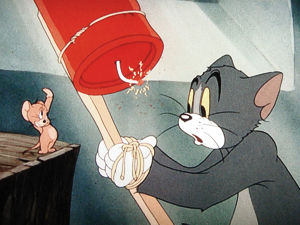
Fine Feathered Friend, another good looking cartoon, brings 1942 to a close. It was around this time that the “fade out” was introduced to bridge from one situation to another (usually an explosion of some sort), and soon after some of the T&J films became a series of non-stop gags rather than narrative storylines. This doesn’t stop Sufferin’ Cats! from 1943 (in which Tom has a rival after Jerry) and The Lonesome Mouse from being any less funny however! In this one, Jerry finally gets Tom thrown from the house but soon becomes bored with the quiet life, so the two join forces to get Tom back in and up to their old ways. After a couple of attempts, a T&J cartoon finally won an Academy Award with The Yankee Doodle Mouse, this print coming from a proud reissue later in that same year which announces the win in the title card. Although I personally find this to be a quite routine short, the wartime bent, clever army parallels and simply hysterical sound effects probably had something to do with its win.
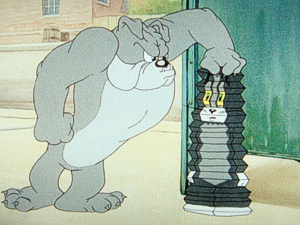
Baby Puss, also from 1943 in which Tom is teased by three other cats and Jerry when he has to don a baby disguise to entertain a little girl, comes next, while the first of 1944’s efforts begins with The Zoot Cat. Contrary to popular belief, Tom & Jerry did speak, albeit briefly, in a number of their animated films, and here is where you’ll hear them utter their first words, as Tom tries to impress his feline beau again, without much help from Jerry! Next up is yet another popular cartoon, and not just affectionately known by T&J fans. The Million Dollar Cat puts a twist on things by having Tom refrain from harming any living creature – including Jerry – so that he can get his hands on his eccentric Aunt’s inheritance. Needless to say, things do not pan out that simply, especially when Jerry does everything he can to annoy Tom (who by now goes by the smoother appearance that we associate with this era’s shorts).
1944 continues with The Bodyguard, the one where Spike (voiced by Billy Bletcher, who also provided Pete’s growls in the Disney cartoons) comes to Jerry’s aid to beat Tom up every time he uses the magic whistle, Puttin’ On The Dog, where Tom chases Jerry into a dog pound and must disguise himself as a pooch, and Mouse Trouble – another Oscar winner, and very much in the style of stable-mate Tex Avery’s films in terms of pace and gags. This time, Tom takes tips from the book How To Trap A Mouse (a Random Mouse publication, naturally) but finds it no use when up against a mouse of Jerry’s strength and will, and in The Mouse Comes To Dinner, it’s again a table full of food that becomes the focus of dispute between feline and rodent.
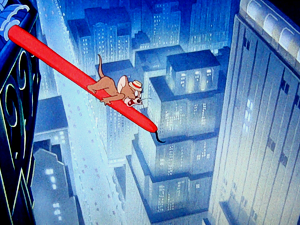
Mouse In Manhattan is a rare mouse-only cartoon where Jerry heads for the big city, in a short reminiscent of Disney’s The Country Cousin from 1936. Proof that this set comes uncut comes with one of the series’ “blackface” gags always usually removed (there’s an unskippable but understandable 45-second “cartoons of their time” note as the disc plays that disclaims the dated stereotypes), although more visually appealing are the effective perspective backgrounds that always remind me of the detail put into the layouts for Max Fleischer’s 1941 feature Mr Bug Goes To Town. This first disc ends as the wide wide world of sports makes its first appearance in a T&J cartoon with Tee For Two, a golfing escapade in which Tom’s game is disrupted by a number of terrific gags perpetrated by a woodpecker, a swarm of bees…and Jerry, of course.
If you’re not exhausted by now, the second disc offers up more cat-astrophic mouse-wrecking: Flirty Bird has Tom in a rare role trying to save Jerry from a tough eagle, and there’s yet another Oscar winner, Quiet Please! which plays on a similar premise as Million Dollar Cat by having Spike warn Tom against making any noise while he tries to get some shut-eye. Obviously with a set up like that, Jerry can only but try and wake the bulldog up and get Tom into more trouble! A line-up from 1946 – Springtime For Tom, The Milky Waif (introducing the little mouse Nibbles), Trap Happy and Solid Serenade – all provide variants on previous cartoons in the series, but a personal favorite of mine is Cat Fishin’ from 1947, which I still have my original 16mm copy of. In this one, Tom uses Jerry as bait to catch a shark, but the mouse refuses to stay hooked, and fishes up some real trouble of his own. In Part Time Pal, Tom gets drunk as he watches guard over the refrigerator and tries gives the house maid a piece of his mind while befriending Jerry.

Several ideas from the T&J cartoons would later be used by both Hanna-Barbera themselves and by other animators, but the series also “borrowed” much from other studios. I’ve personally never understood why the next cartoon, The Cat Concerto, went on to win an Academy Award (their fourth!) and become one of the most cherished cat and mouse shorts when it is a direct copy of the Bugs Bunny cartoon Rhapsody Rabbit, directed by Friz Freleng. The basic set up for both cartoons is simple: Bugs/Tom portrays an acknowledged master pianist primed to give his greatest performance of Liszt’s Second Hungarian Rhapsody (forever to be associated with the manic cartoon output of animation houses everywhere). As he prepares and finally settles down ready to play, a little mouse makes things impossible for him by pulling on the strings inside the piano, slamming the shutter on his hands and generally running amok. While I agree that the concept is best suited to the Tom & Jerry double act, the fact that this cartoon came so close to Bugs’ first and better effort and then went on to steal an Oscar somewhat puts me off the short, and however funny it may be, the Freleng version remains the more frantic and heated battle.

In Dr Jekyll And Mr Mouse, the inevitable happens when Tom mixes Jerry a potion to teach him a lesson about drinking his milk. Things don’t quite work out for Tom, and Jerry’s potion turns him into a super-strong giant mouse who is only able to cause Tom more pain! Tom continues to try and impress a female kitty, this time at the beach, in Salt Water Tabby, and in Mouse In The House Tom is joined by a rival cat in trying to catch Jerry – loser is thrown from the house. Some inventive situations are developed in The Invisible Mouse, another popular short, which has Jerry submerged in invisible ink that allows him to torture Tom in a whole new way. Some of H-B’s best work is in this one, with some neat effects and perfect camera staging – you’ll actually believe that little Jerry really is there!
By now the cartoons could easily have been making themselves and perhaps the most evident proof of this is the next film, Kitty Foiled from 1948, which is straight slapstick T&J action from start to finish. Without any pause for breath, the “plot” being has Jerry being helped to keep safe from Tom by a little canary (who would go on to make a number of his own MGM appearances), but the influence of Hanna-Barbera’s stable-mate Tex Avery is clearly felt. The Truce Hurts is another classic, being the one where Tom, Jerry and Spike sign a pact of friendship and vow to end their bickering ways…that is, until the promise of a meaty steak comes between them! This would have been a great short to end this collection on, but we have two more: cat and mouse join up again in Old Rockin’ Chair Tom to outwit a super-duper mouse catcher named Lightnin’, and in Professor Tom, his learnings go amiss when a kitten he is teaching decides to take Jerry’s side of the battle, as always.

Although running through these cartoons in one or two sittings can drive one loopy – there’s more than a whopping four and a half hours of material here – it is absolutely terrific to finally have what we’ve been asking for for so long. Those, like me, who stayed away from previous Tom & Jerry DVDs and stuck by their Art Of Tom & Jerry LaserDiscs can at long last put those discs away, not only does this Golden Collection provide a like-for-like run of each cartoon in chronological release order, but just wait until you see the state of the prints! As Warners’ first dip into fully animated compilation sets on Blu-ray after a few teases of cartoons as supplements on vintage live-action titles, we can only wait with huge anticipation and what is surely still to come!
Is This Thing Loaded?
If sales sustain them, there would seem no reason why the Tom & Jerry Golden Collections couldn’t continue to four or five volumes. There’s at least another two to be had in the remainder of the Hanna-Barbera cartoons, after which Chuck Jones took over the series in the 1960s; a set that could also contain the less popular European cartoons of Gene Dietch that do actually contain one or two unique shorts. Or perhaps those films could be combined with a handful of later outings such as the Cartoon Network specials and the final theatrical T&J short, for a volume of its own?
Those Art Of Tom & Jerry laser fans had to wait until the second volume before a serving of extra material (in the form of additional Hanna-Barbera MGM shorts and Tom & Jerry’s vintage film appearances), but here we get a full feast of extras. Very happy with those laser sets, I never bothered collecting the T&J shorts on DVD due to the various mix-ups in presentation and conflicting reports. I did previously review the Deluxe Collection last year but, that release aside, I can’t verify with any certainty if the supplements collected here have been previously released or are unique to this set.

Disc One’s primary bonus is the original pencil test footage for The Midnight Snack, the 1941 cartoon that served as the first official series entry after Puss Gets The Boot and in which Tom and Jerry are named as such. This is extremely fascinating, being less the kind of fluid pencil test we may be more used to seeing and more a chance to see the artists’ poses that would be inbetweened later. Here, Tom is still Jasper in the visual dialogue cues, showing how late in the game on their second short the name change was. The reel is synced up to the cartoon’s soundtrack, although interestingly this is the eventual sanitized re-dub that suggests the Mammy Two-Shoes character owns Tom & Jerry’s house as opposed to being a domestic: a ridiculous state of affairs when I bet all the kids watching these cartoons thought that all along anyhow!
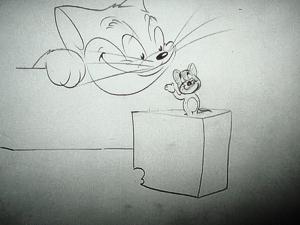
In addition to the handful of video extras (truly a question of quality over a not insubstantial amount of quantity here, the best of both worlds), the set also offers a series of excellent select cartoon Audio Commentaries throughout, with such animation luminaries as Mark Kausler, Jerry Beck and Eric Goldberg. Joining them are comedienne Nicole Parker (or Park as the set’s printed insert has it), historian Earl Kress and author Michael Mallory in a variety of configurations over a number of cartoons; the first disc’s titles to get this treatment are Puss Gets The Boot, The Night Before Christmas (which both get two, appropriately), The Yankee Doodle Mouse, The Zoot Cat and Mouse Trouble.
While some of the cartoons have been marked out for this attention for clear reasons (the earlier couple and the duo’s first Oscar-winner), a number of them seem to have been picked quite randomly, and the comments range from the truly informative to the appreciative and the mostly obvious and often silent, which don’t really add much insight . Kausler is as always a fountain of knowledge and admiration, while much is either learned or confirmed from Beck and Goldberg (who explores one very well known H-B controversy in his track), but even though some of the others sound more text-book based or lighter in what they can add, these are all very welcome. Disc Two’s commentaries include remarks recorded for Quiet Please!, The Cat Concerto, two tracks for Dr Jekyll And Mr Mouse and Beck flying solo on Kitty Foiled.
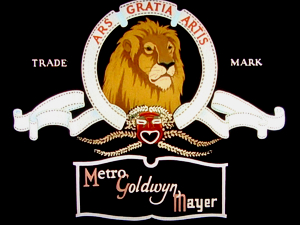
There’s also a more plentiful assortment of video featurette supplements to enjoy on this second disc, starting with the superb interview documentary How Bill And Joe Met Tom And Jerry, which lets the animated pair’s creators speak at length about their cat and mouse years. The 2004 dating means this could well have turned up in a previous Spotlight Collection but not having those sets I can’t confirm it. Even if that is the case, this candid (Barbera also gives their side of the Concerto debate) and conversation is well worth revisiting and is wonderfully interesting for first timers. Alongside a brief history of the MGM cartoon unit, which allows the chance to catch a rarely seen animated Leo the Lion logo, hearing Hanna and Barbera talking for near enough a half hour about the creation of Tom and Jerry from their own perspective (Bill and Joe are recorded separately but intercut to expand on what the other is talking about) is an absolutely delightful joy.
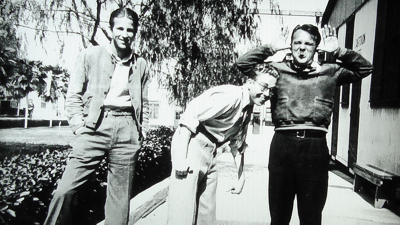
Just as interesting is the contextual placing Vaudeville, Slapstick, And Tom & Jerry, a new piece that looks at the traditions of physical comedy, their influences on Hanna, Barbera and their teams of artists, and where their celebrated cat and mouse fit into it all. The traditions of the early comedy pioneers are examined briefly, as are a number of notable comedy teams and double acts that built their reputations on establishing personalities for themselves and featured big in the movies, from the Marx Brothers and Laurel & Hardy to Abbott & Costello and the arrival at the MGM Studio by director Tex Avery. All of this is expounded upon by a roster of authoritative names, including Joe Adamson, Mallory, Goldberg, Beck and Kausler, among others, who all provide unique insights. Observational and engagingly cerebral, this warm and welcome (if slightly overlong) 23-minute featurette only adds to the appreciation of the series’ influences and the influence it had within the greater animation and comedy screen landscape.
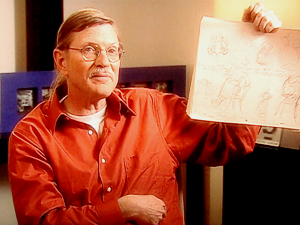
The Comedy Stylings Of Tom & Jerry is less essential; short at just five and a half minutes and light on substantial commentary, this is more a pop-doc approach to uncovering what in the T&J cartoons makes people laugh. We hear more from Nicole Parker (who, in the commentary tracks, sounds as if she’s never seen the cartoons before so it’s nice to see her more prepared here) and another of her Mad-tv collaborators, but Kausler is best again in making the acute knowledgeable points and suggesting the rather random link between why the younger comedians are here talking about Tom & Jerry cartoons: “We have our stars of comedy today, and they had theirs”. It’s a tenuous connection, and this piece does become repetitive given the other, better, extras already seen, but I guess it’s good to see how the vintage classics are genuinely appreciated as forbearers to what the laughter-makers of today are doing.
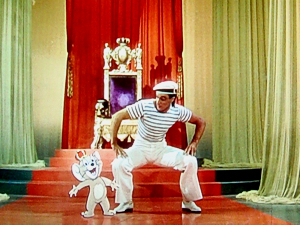
Finally, and keeping things chronologically tied to the time period of the included shorts, as opposed to the laser set that withheld such niceties until a second volume, is the inclusion of Jerry’s all-time classic dancing appearance opposite one of MGM’s biggest stars, Gene Kelly, for The Worry Song sequence from Anchors Aweigh. Kelly had hoped to star with Hollywood’s biggest mouse, Mickey, in the storybook scene of this 1945 live-action feature, but Walt Disney refused to loan out his star (somewhat oddly, since the Mouse had already appeared in MGM’s 1934 film Hollywood Party alongside Jimmy Durante and the Disney Studio would provide the terrific visual effects for the later sci-fi touchstone Forbidden Planet).
With Mickey out of the picture, MGM’s in-house cartoon producers Hanna-Barbera stepped in and offered Jerry instead, and the result – an eight minute musical sequence combining Kelly and a slightly taller Jerry, who also sings – turned out to be one of MGM’s all-time defining moments, and a real career highlight for Kelly. More recently referenced, brilliantly, in an episode of Family Guy where Jerry was digitally erased and Kelly wound up dancing with Stewie Griffin, this is the genuine original, presented complete and uncut (as opposed to the five minutes sampled on the earlier LD) in its correct 1.33 ratio. It’s been seen countless times before, but with Kelly’s impeccable hoofing and detail such as Jerry’s reflection in the glossy floor, this never fails to entertain and really is the best part of this fun picture.

Case Study:
Pretty standard, but suitably classy, Tom & Jerry: Golden Collection Volume One comes to Blu-ray very nicely packaged. A slimline BD case houses both discs (the only personal caveat with this is that it’s one of those eco cases with the cut-outs behind the discs that may save plastic but can ruin the paper sleeves with too much removing and replacement of the platters). However, this is protected with a nice slipcover that, while it basically replicates the sleeve underneath, adds a cool foil-enhanced sunburst effect that’s suitably ’30s deco, and the characters are fairly on model for the timeframe this collection gathers.
Inside is a surprisingly detailed eight-page booklet – a rarity from the usually insert free Warners – that provides background info, short listings, synopsis, Academy Award notification, plus special feature indication. Those with the LD sets will be reminded of the wonderful information found in those packages, which this does a good job of updating to the new format. The only thing I did find missing, though, was release date statistics, where there is space for at least the year a cartoon debuted, and which would have been appreciated.
Ink And Paint:
The phrase “remastered” rather than “restored” should always ring internal alarm bells, but here they really mean it. There’s no discussion on the set about the way Tom & Jerry’s first 37 cartoons were transferred here, but it does look like original elements of some kind were used as a source before some further digital pass removed any major blemishes. Animated shorts compilations were rumored to have been prohibitively expensive to bring to HD due to the high costs involved in bringing the images up to the required level of quality, but here there’s a more than happy medium that doesn’t restore the prints as wipe-washed as Disney’s classic features but provides a stable, vibrant and noticeably sharp image that’s leaps over anything we’ve had before on LaserDisc or DVD and appears to either dispense with the dreaded DVNR or utilise a more refined method of it.
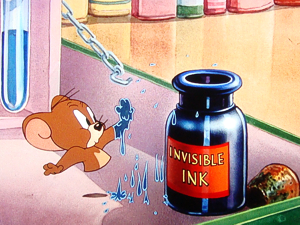
Film grain remains intact, providing a lovely reminder of the vintage of these films, which are presented as stated: uncut and in their original theatrical editions with all main and end title cards in place, and all framed at their correct aspect ratios of what is stated to be 1.33:1 but, to me, seems to actually approximate the original 1.37 negatives. Colors are remarkable, and clearly some extensive grading has gone into the remastering process. As always with many classic animated shorts collections, many of the shorts have their title cards windowboxed within the frame so as to retain text information, although pleasingly here we don’t get the usual colored borders, just plain and welcome black matting, which offers a more preserved approach. If there’s a way of presenting classic animation of large quantities in any better way, I haven’t seen it.
Scratch Tracks:
A sharp as the images are, I found some of the soundtracks to be slightly “softer” in clarity. Clearly some audio sweetening has been applied to the original mono tracks, here presented in perfectly serviceable Dolby Digital 1.0, but in removing the top end signal noise, usually perceptible as “hiss” in older mixes, perhaps there’s been a little too much taken out as opposed to letting those tracks breathe a little more. This isn’t something that’s as distinguishable in every cartoon, and it could well be that I’ve noticed it more as someone who remembers the tonal quality of how we’ve heard such shorts presented in the past.

Although this was something I certainly picked up on, I would imagine the majority of viewers won’t sense anything other than how clean the cartoons sound now; they are neither boxy or compressed, retaining all their dynamism with every smash, thwack and whack hitting home with great force. French and Spanish tracks sound just as treated, but in a different way with some of the dialogue obviously dubbed more recently, although some of the musical scores are unexpectedly rich in the lower end, and English (reflecting the modern-era language in Mammy Two-Shoes’ dialogue) and French subtitles are also optional.
Final Cut:
A notable title for many reasons, Warners is to be commended for finally not only bringing Tom & Jerry to Blu-ray Disc, but indeed for establishing the animated shorts compilation market on the format with the title. There were rumors that it would never happen, that DVD was still the only way we would be able to enjoy the golden six and seven minute nuggets of classic cartoons in our homes, but after years of teasing by way of bonus shorts on such titles as Casablanca and The Adventures Of Robin Hood, the Studio has done themselves proud. That they’ve bothered to even do this with a property that wasn’t originally theirs displays the care and attention to which they dedicate towards their entire library, even if more practical financial reasons also probably had something to do with it.
Of course, these releases need appreciative support if they are to continue, but there’s no reason fans shouldn’t immediately spring for this set – and the almost concurrent first volume for the Looney Tunes a couple of weeks later – anyway. For those whose primary Hanna-Barbera exposure is to their later limited television animation work, the Tom & Jerry series will be a real eye-opener as to how fluid, rounded and full the theatrical animation is. But there can be few serious collectors who don’t already know that, and with truly upgraded video and a suitable assortment of extras, Tom & Jerry’s battle of wits has never looked better or funnier, inviting brand new admiration for these golden age classics!
Animated Classic or Back To The Drawing Board?
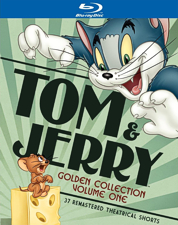 | ||||
Share this article with others:











No comments:
Post a Comment
Thank's!